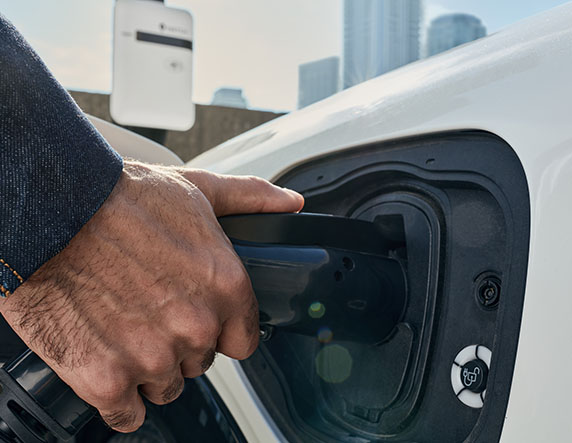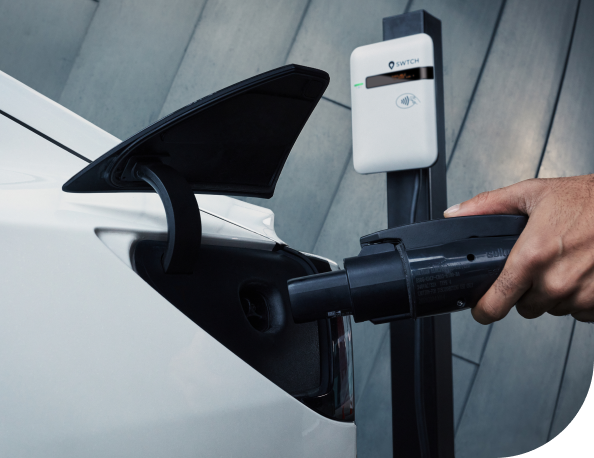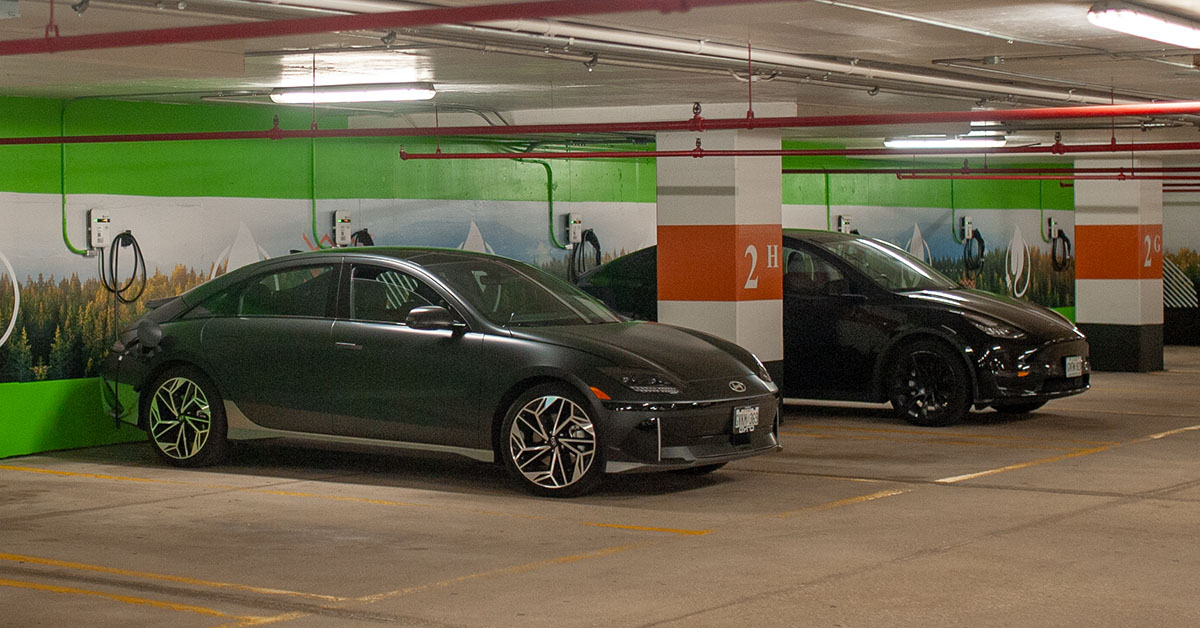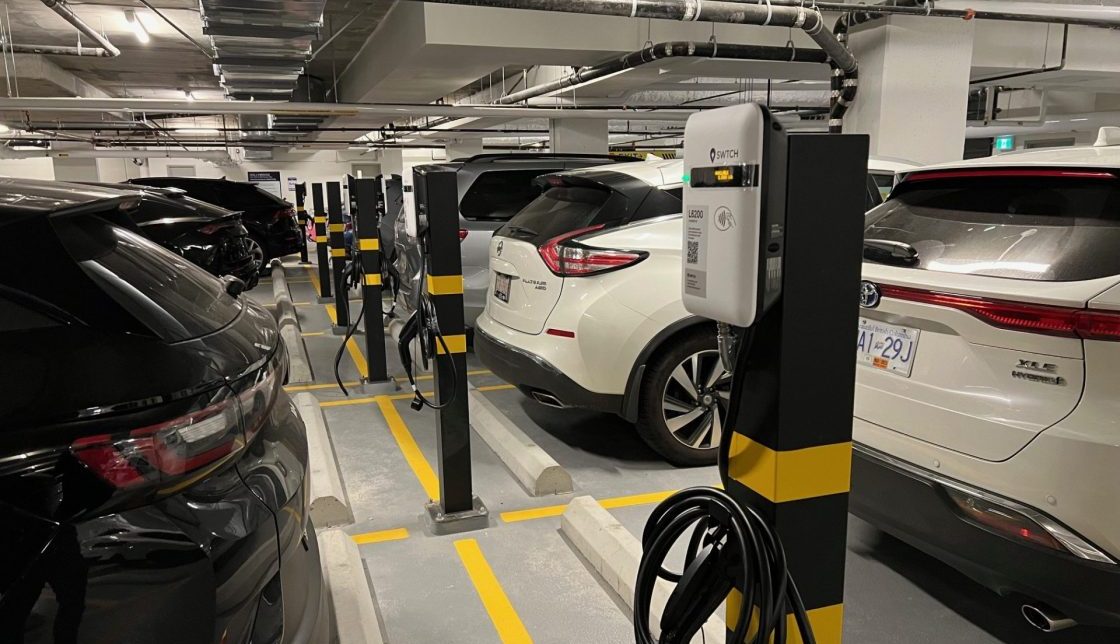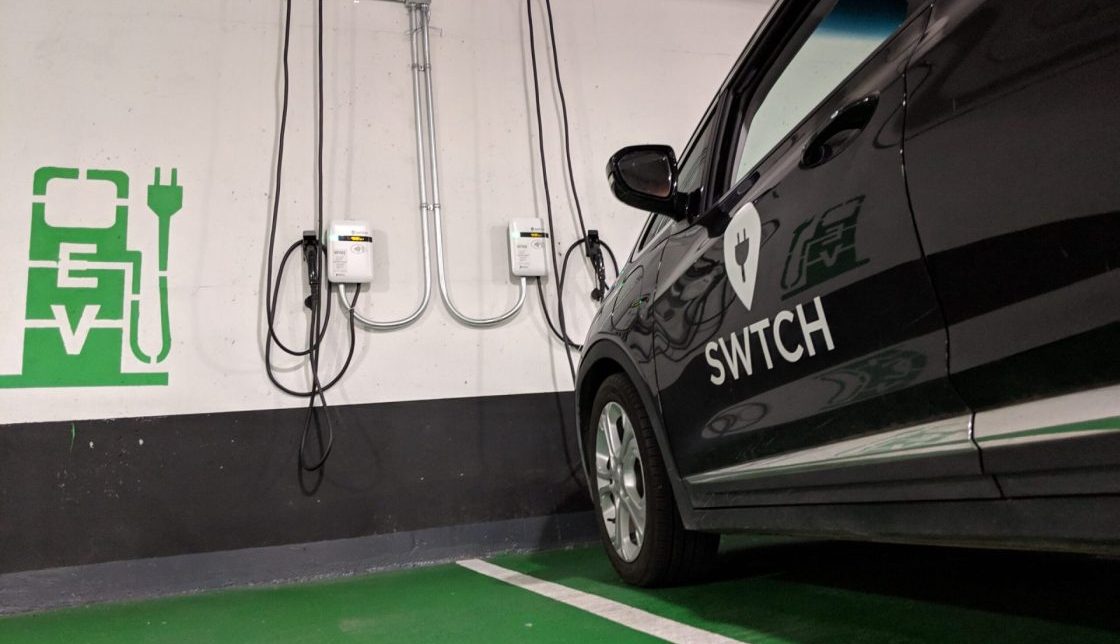8 Key Questions to Ask Before Installing EV Chargers at Your Multifamily Property
EV adoption is growing steadily, so if they aren’t already doing so, you should be prepared for more of your existing and potential residents to request access to EV chargers at your locations. Failing to plan ahead could put you at risk of falling behind the competition as EVs become the standard auto technology of choice in the years ahead.
Meeting this demand is not, however, as simple as merely installing a handful of EV chargers throughout your parking areas. Differences in charging speed and vehicle compatibility, onboard communication and intelligence features, and solutions to better incorporate your chargers into your larger electrical ecosystem should all be carefully considered before you go about putting chargers on the wall or in the ground.
Not sure where to start? Here are seven key questions to help guide you as you plan your EV charging infrastructure rollout.
The Basics: Which type of EV charger should we install?
Level 1 chargers typically use a standard household 110V outlet. These plugs provide the slowest charge — usually around 5 miles per hour. An overnight charge with a Level 1 plug, then, would top a car up by about 50 miles of charge, depending on the vehicle. For most drivers (unless driving is done infrequently), using a level 1 charger is a temporary solution until they or their landlords can install the faster, Level 2, charger.
Level 2 chargers are the standard for multifamily properties. Charging speeds are much faster with Level 2 compared to Level 1, providing the driver with around 15-25 miles of range per hour. In most cases, it’s easy to get a car to fully charge overnight. However, installing many level 2 chargers can pose a challenge in older buildings with dated electrical infrastructure without intelligent load management — more on that below.
Level 3 chargers, often called “DC Fast Chargers,” provide a lot of power very quickly… but that comes at a much greater cost. This design is closer to that of a gas station pump and usually allows a driver to park and fully charge their car in 25-30 minutes. While it seems like a benefit to have a machine that charges so quickly, it’s usually unnecessary for home living situations, and each individual charger often will cost more than a hundred thousand dollars, making them prohibitively expensive. These kinds of chargers also tend not to offer the kind of charging experience EV drivers actually want at home.
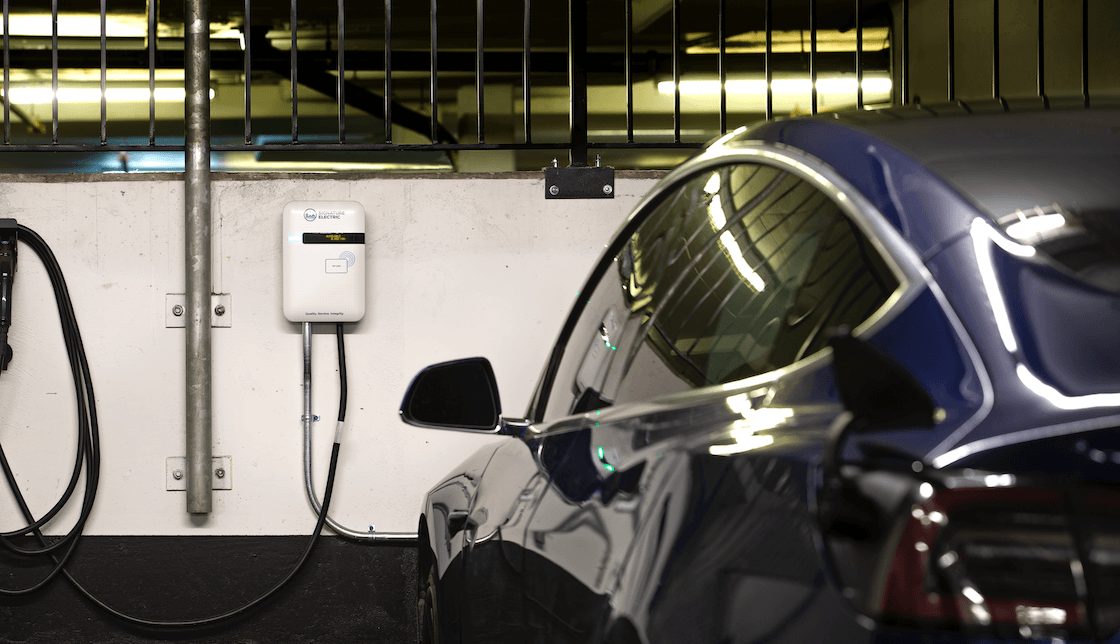
Assessing the demand: How many EV chargers do we need?
Understanding the current and projected demand for EV charging at your multifamily property is crucial to sizing your EV charging system and any electrical upgrades properly.
Here are some general guidelines to keep in mind as you plan:
- High-level research: By 2030, experts predict that 30% of new vehicles will be electric. That’s not to say you should have EV chargers for 30% of your residents, but over the next few years, a LOT more electric vehicles will be on the road… and in your parking lot. To stay competitive, you’ll want to ensure that you can keep pace with this demand in a sustainable way.
- Resident EV demand: Do you have a sense of how many EV drivers you have in the building? For shared chargers, a general rule of thumb is 1 shared charger for every 3 EV drivers. Consider sending out a survey to understand how many of your tenants/residents intend to purchase an EV in the next 2-5 years.
- Electrical capacity: Do you know how much available electrical capacity your system has that could be used today to install new EV chargers? Typically, each level 2 charger would need 40 amps of available space on a breaker. With an intelligent load management tool, though, your building can “load share” that same 40 amps between up to four Level 2 chargers without requiring you to expand electrical capacity (or expand it as much).
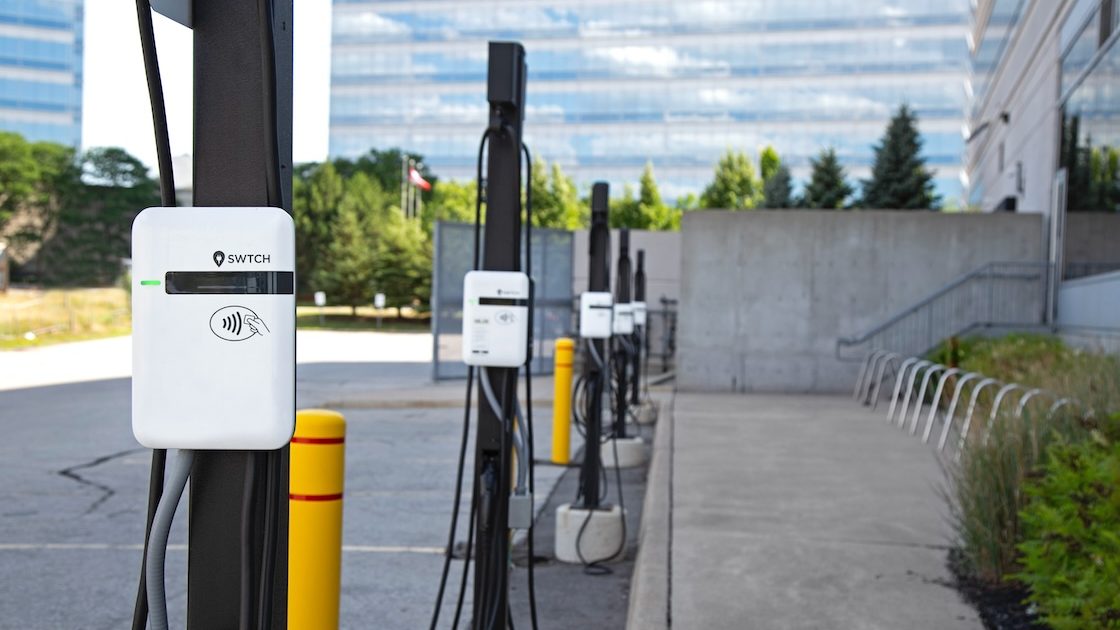
How can we manage the installation cost of an EV charging system?
Costs are often cited as the main reason why property owners are hesitant about installing EV chargers. Upgrading electrical infrastructure can be a significant cost — especially in cases where the building was not constructed with EV charging in mind. But there are ways to alleviate your costs, both in the short and long term.
One tool that’s integral to almost any system is load management. Load management is the ability to share electricity across multiple electric vehicle charging sessions at the same time. It can mean the difference between having to make an enormously expensive electrical upgrade or not, thereby putting the installation of EV charging infrastructure well within reach for buildings where such projects would otherwise be too expensive or difficult (including many older buildings).
For example, SWTCH Control is our load management technology and is used to help property operators install and manage up to 4 chargers on the same circuit — most often allowing the building to forgo expensive electrical infrastructure upgrades. With this tool in place, you can intelligently manage your EV chargers’ energy use in real-time, and ensure that all cars are fully charged by the morning.
Learn from the pros: Here is a great example of a MURB that kept installation costs low by using SWTCH’s load management system.
Another extremely effective way to lower the costs of rolling out this kind of project is to take advantage of local incentives and rebates. They can significantly reduce the cost of installing EV charging — up to 100% in some areas! You can contact us for help digging into incentives that may be available for your properties.

How do we scale up the number of chargers?
The number of chargers you need will be determined by the estimated number of EVs in your building. With EV ownership on the rise, the question becomes one of how many chargers to install each year. You don’t want to break the bank in your initial installation, but you also don’t want to fall behind your competition.
Lay a solid foundation by taking the following steps.
- Opt for solutions that use load management technology to reduce the amount of electrical infrastructure expense you’ll face in building out your charging system.
- Select an open software platform to ensure you have flexibility in adding or removing hardware over the years. You don’t want to lock yourself into a closed platform only to run into problems if the solution doesn’t work well or hardware stops being manufactured. You’ll need to rip everything out to start over.
- Get started with a few chargers as a pilot program, and grow sustainably over time as your building’s needs change.
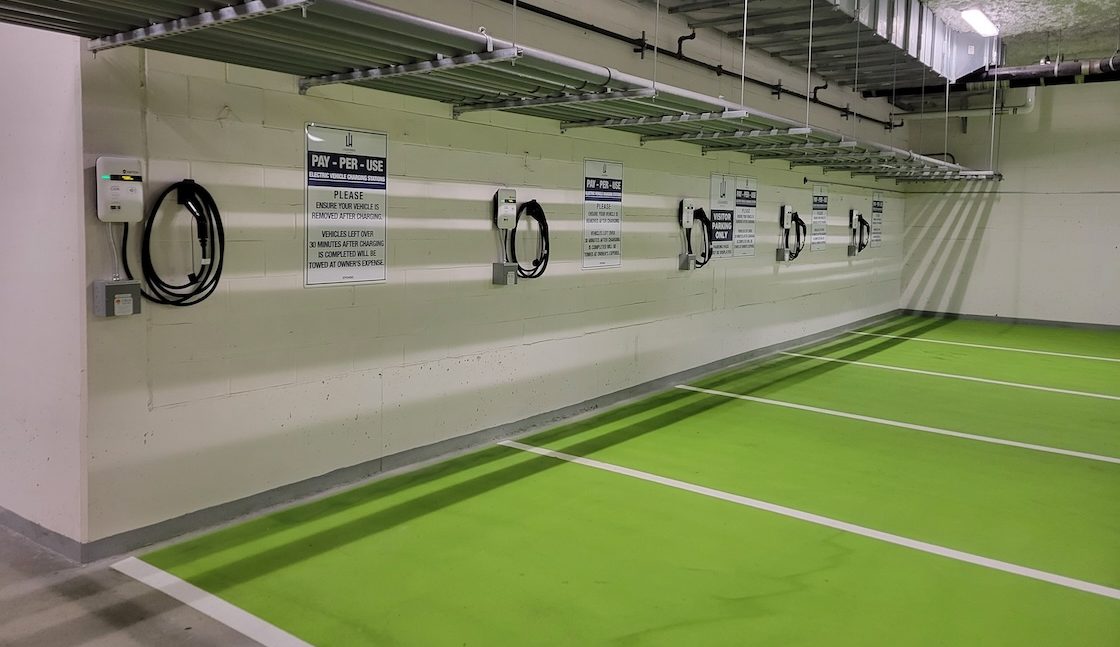
How can I maintain and manage our EV chargers?
Just getting chargers installed isn’t the whole story. Once they’re in, maintenance and management of those chargers are required to ensure they deliver what tenants and visitors need.
There are steps that can be taken during the installation phase to minimize your maintenance requirements. These include:
- Placing the charger somewhere accidental collisions are unlikely to happen
- Ensuring cables can be neatly put away (cable retractors work well for this)
- If outdoors, finding a way to protect the charger from snow, ice, salt, and other potentially harmful elements
It’s also advisable to do preventative maintenance to keep chargers in good working order. Ideally, once a year, someone from your maintenance team should inspect each station for the following:
- Visible cracks in the chargers
- Dislodging or degradation of the cables
- Dirt or other obstructive materials to interfere with properly connecting the chargers to vehicles
- Damage to, or bending or warping of, the charger connector’s pins
Note that the frequency of this kind of inspection may need to be adjusted for shared or publicly accessible chargers that get frequent use from many drivers, as well as chargers that are unable to be kept safe from outdoor elements.
If you notice that your chargers develop problems more frequently, you will likely want to conduct preventative maintenance inspections more often.
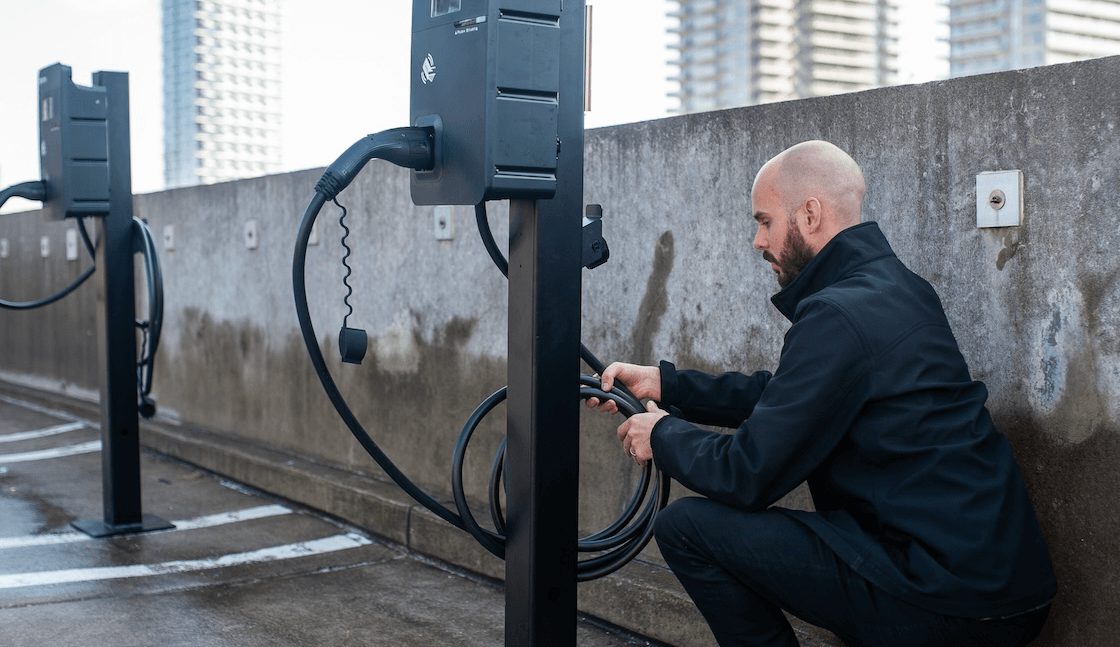
There are also some EV charging partners that offer maintenance plans as part of their installation or ongoing software agreements, which can allow you to offload this portion of maintaining your network to a trusted partner.
As for charger management, it’s made far simpler when all your chargers are connected, either wirelessly or via a wired internet connection, to your local network, and made accessible via a centralized management solution. This will make it much easier to understand charger usage patterns, see when a charger is in need of repair, and handle pricing and payments.
Take a look at our connected charger management system, SWTCHOS
How will we meter the electricity, and who do we charge?
If you want to precisely meter the electricity consumed by chargers on your properties and ensure that the right people are paying for the electricity that is consumed, it’s essential that you invest in networked chargers that can be remotely managed by your team, as well as a solution that allows for charging sessions to be billed directly to the EV driver, and not requiring management to determine who charged when.
This solves two problems at once:
- A connected charger will transmit all essential data to your management software, giving you a complete picture of the usage of your chargers, including the energy they use. If you don’t use such a system, it becomes much more difficult to understand energy consumption at a granular level. Electricity usage will just appear as part of the total energy bill for your building.
- By using a system with accounts tied to an app or an RFID card, any charging sessions a user starts will be billed to their account. For sessions started directly from a credit card or other payment option, a charge will be issued at the time of charge.
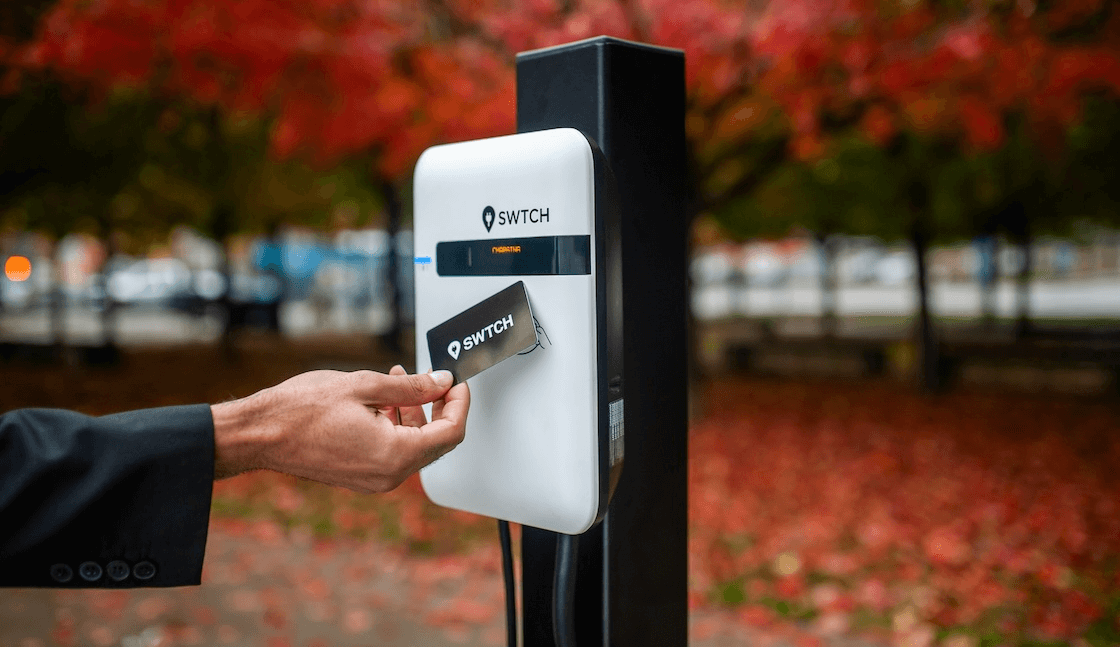
How can I ensure my chargers are reliable?
When it comes to EV charging stations, reliability is essential. Drivers depend on regular and accessible charging, so a defective charger presents a major setback for them and something that could potentially harm their relationship with the charger owner.
Keeping up with preventative maintenance, as mentioned earlier, is key to ensuring reliability. Other considerations include:
- Selecting quality hardware and software known for being resilient and offering uptime as close to 100% as possible
- Ensuring installation of your chargers is done by experienced professionals. Wiring and mounting of the chargers must be done in accordance with local regulations.
- Using a networked solution that can monitor the chargers 24/7 is incredibly valuable so they can flag any issues and take immediate action if a charger is suddenly out of service or underperforming.
- Checking in with your EV drivers to get feedback. They may have insight into the state of your chargers that you cannot see from your management software.
Charger reliability is one of the biggest pain points for EV drivers today, so taking care to set your installation up the right way, and to be proactive about handling repairs and inspections, will go a long way to keeping your EV drivers happy.
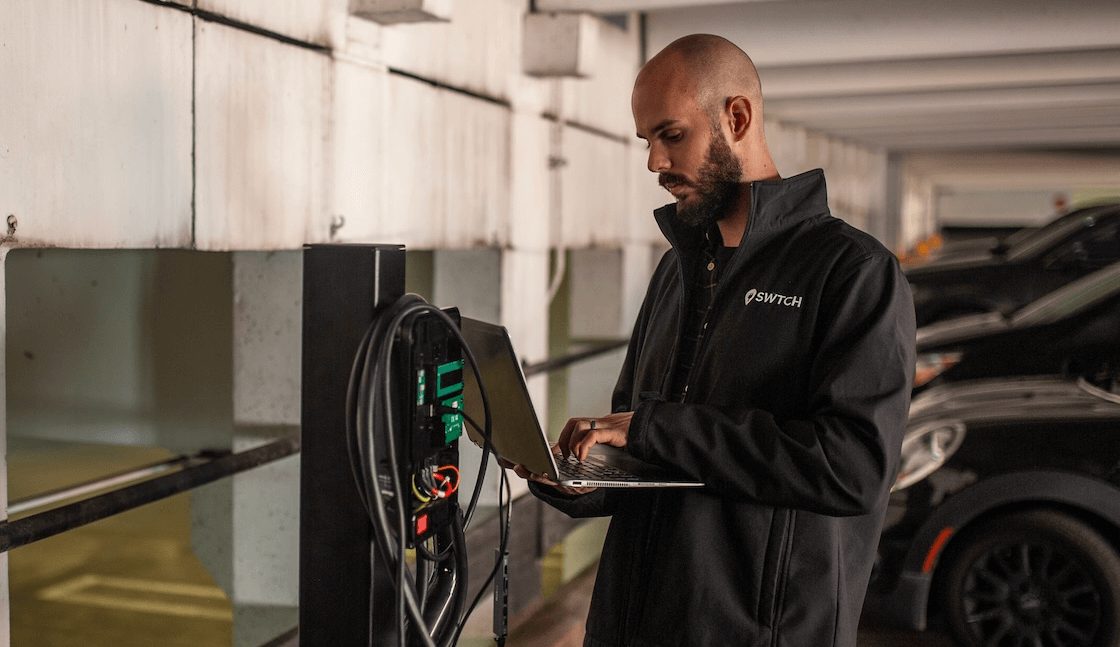
How do I create a good user experience for EV owners?
Keeping things simple, and putting into practice the recommendations from throughout this article, is ultimately the way to go:
- Install one charger in each dedicated parking spot used by an EV owner, or enough shared chargers that you’re unlikely to have situations where EV drivers are frustrated by limited access to charging when they need it.
- Install Level 2 chargers. These are fast enough that, over the typical charging period of several hours or overnight, every driver should be able to get to either full or nearly full charge.
- Ensure your chargers are in good working order. Ideally, you want as close to 100% uptime as possible.
- Use an access system tied to individual accounts, via apps or RFID cards, to streamline payments and billing.
For the majority of drivers, all that matters is that they have access to EV chargers, that they work when needed, and that starting and paying for charging sessions is a painless experience. If you can deliver on that, you’ll have created the kind of user experience that is likely to keep your tenants and visitors happy.
Want some help building a scalable, functional EV charging system in your buildings? Get in touch!
